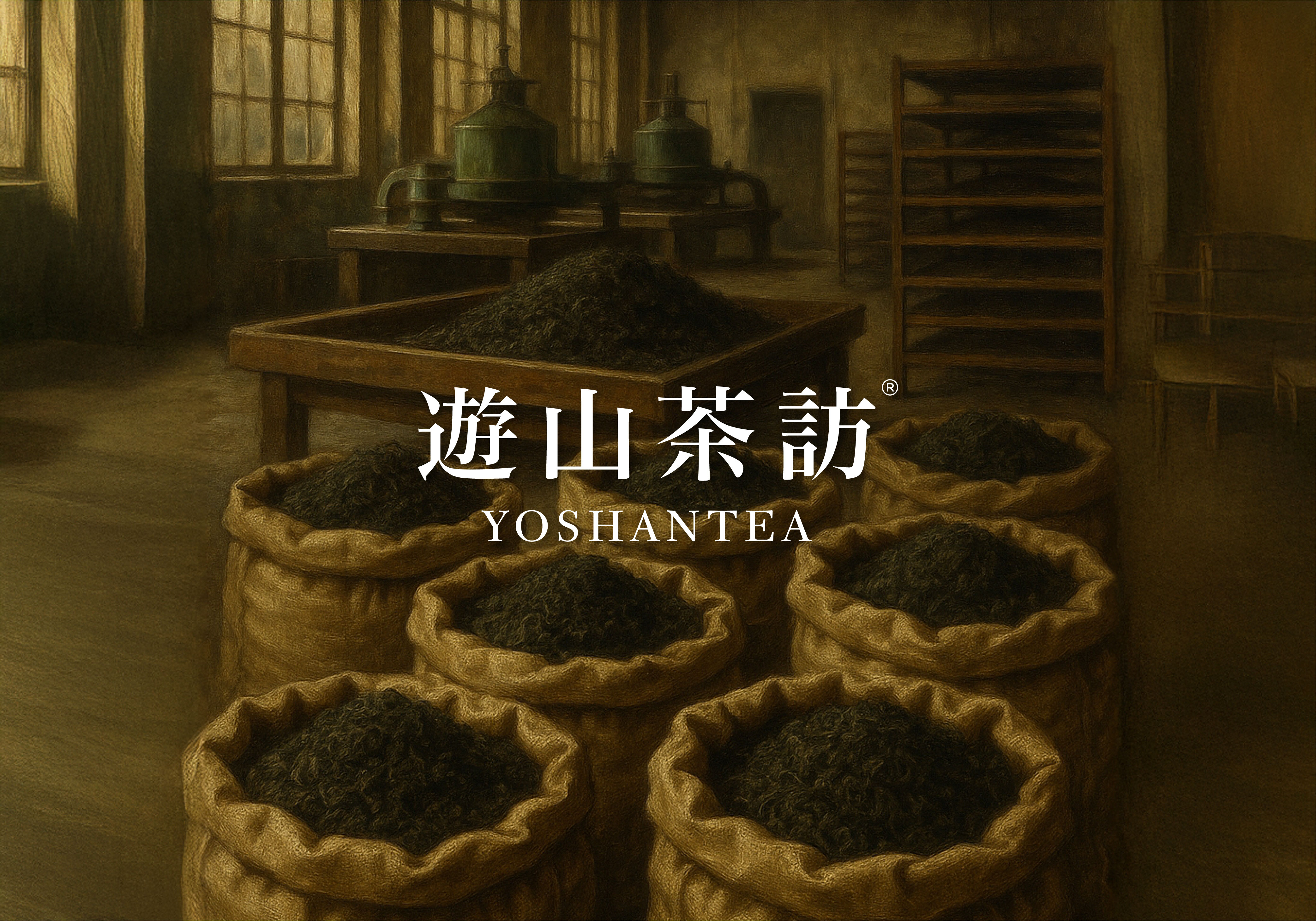Hello everyone,
I'm Andy, a tea enthusiast.
“Is this tea batch-merged? Is it blended?”
In Taiwan, this question is often used as a form of criticism.
However, blending and batch merging are actually common and essential parts of the tea production process.
They are also extremely complex and difficult techniques.
When done properly, they demonstrate the tea maker’s control of flavor and their artistic expression.
Today, I’d like to share with you what blending and batch merging mean, and their significance and value.
What Are Tea Blending and Batch Merging?
Blending and Batch Merging may appear similar, but they are subtly different in practice:
- Blending:
This refers to combining teas from different cultivars, regions, harvest seasons,
or fermentation levels in specific proportions, to create a tea with more stable or layered flavor characteristics.
- Batch Merging:
This is often used for teas that are of the same cultivar, from the same region, and produced around the same time.
These teas are merged during the refining stage to improve consistency and processing efficiency.
In simple terms, blending is “for creation”, and batch merging is “for stability.”
Why Do We Blend or Batch Merge Tea?
Each batch of tea is influenced by factors such as weather, picking time,
and the skills of the tea maker, so flavor differences are inevitable.
Blending and batch merging serve the following purposes:
1. Flavor Stability:
Especially for large-scale production or established brands,it is crucial to ensure that the flavor differences between batches are not too great.
This is an important method for maintaining product quality.
2. Enhancing Overall Quality:
By mixing teas with minor flaws with high-quality teas, flavor can be balanced and the mouthfeel softened.
3. Creating Distinctive Flavors:
Experienced blenders can craft complex and rich flavor profiles by precisely adjusting the ratios of different teas.
4. Improving Efficiency and Yield:
Batch merging ensures consistent quality across the entire batch, which facilitates processes like screening, roasting, and packaging during refinement.
What Makes Blending and Batch Merging Difficult?
These two practices are far from being simply “mixing teas.”
In fact, they require extensive experience and subtle sensory judgment.
Veteran blenders and batch merging specialists are often well-versed in the entire tea-making process.
Why is it so difficult to become a skilled tea blender or batch merging technician?
- Flavor Is Hard to Predict:
The aroma and taste of different teas influence one another. Sometimes,
the result of combining them does not enhance the tea, but degrades it.
- Difficult to Control Ratios:
Even the slightest adjustment in blending or merging ratios can significantly alter the final flavor.
- Inherent Instability of Tea:
Tea is a natural agricultural product. Even if it is the same cultivar,
seasonal changes can cause the flavor to differ, requiring constant adjustments.
- High Labor and Time Costs:
Each blending attempt must go through repeated testing and tasting to ensure the final quality aligns with expectations.
- Difficult to Memorize:
A tea blender must remember the detailed flavor profile of each tea,
along with its appearance and liquor color, before they can make the proper blending or merging decisions.
Why Are Blending and Batch Merging Stigmatized?
In Taiwan, some people associate the terms “blending” or “batch merging” with negative practices such as “adulteration,
” “mixing,” or “passing off inferior goods as superior ones.”
This misunderstanding stems from a long history of a lack of transparency in the market.
Possible reasons for the stigma include:
- Past Market Chaos:
In the past, some vendors used the term “blending” as a cover for mixing in cheap or imported teas, resulting in inconsistent quality.
- Lack of Information Transparency:
Consumers often have no way of knowing the origin or composition of blended teas, which leads to unease and mistrust.
- Misconception That Only Single-Origin Tea Is Genuine:
“Hand-picked, single-estate tea” is often seen as the benchmark for high quality, which makes blended tea appear “less pure.”
However, in reality,
it is very difficult for a single tea garden to produce a tea that is perfectly aromatic, sweet, and mellow.
Even if such a perfect tea exists,
its quantity is extremely limited and its price will be exceptionally high.
Conclusion
To sum up, a well-executed blend or batch merge is a combination of craftsmanship and responsibility.
Blending and batch merging are not shortcuts or methods of cutting corners,
but rather a tea artisan’s pursuit of flavor and commitment to quality.
With information transparency and honest labeling,
this technique should be properly recognized and appreciated once again.
That’s all for today.
I hope this has been helpful.
See you next time!
#yoshantea #taiwantea #dongdingtea #oolongtea #teafacotry #FSSC22000 #safetea # teablending #batchmerging #teaknowledge #taiwanteaculture #artoftea #qualityfirst #craftsmanship
